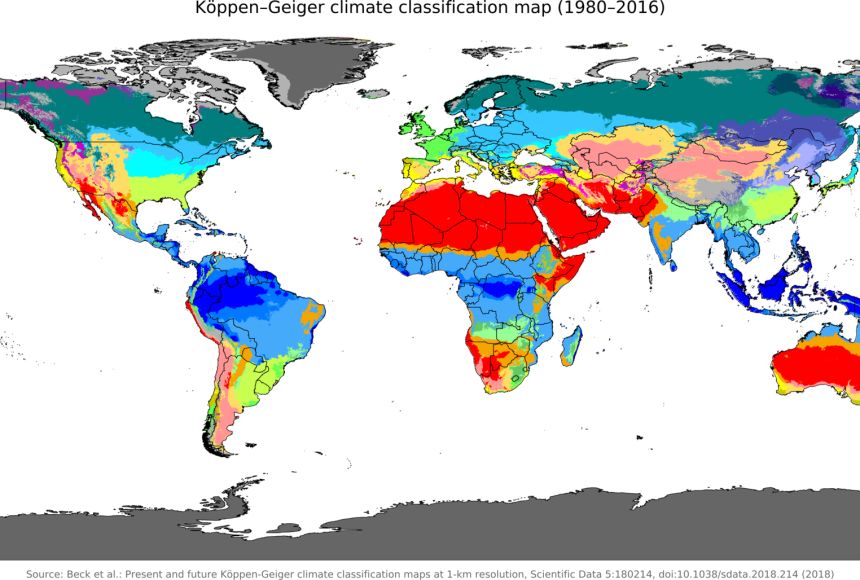ENCYCLOPEDIC ENTRY
ENCYCLOPEDIC ENTRY
Köppen Climate Classification System
Köppen Climate Classification System
The Köppen climate classification system is one of the most common climate classification systems in the world. It is used to denote different climate regions on Earth based on local vegetation.
Grades
5 - 8
Subjects
Earth Science, Climatology, Geography, Social Studies, World History
Image
Koppen Classification Map
The Köppen-Geiger system uses colors and shades to classify the world into five climate zones based on criteria like temperature, which allows for different vegetation growth.
Map by H.E. Beck, N.E. Zimmermann, T.R. McVicar, N. Vergopolan, A. Berg, and E.F. Wood

Media Credits
The audio, illustrations, photos, and videos are credited beneath the media asset, except for promotional images, which generally link to another page that contains the media credit. The Rights Holder for media is the person or group credited.
Director
Author
Production Managers
Program Specialists
Producer
Intern
other
Last Updated
July 19, 2024
For information on user permissions, please read our Terms of Service. If you have questions about how to cite anything on our website in your project or classroom presentation, please contact your teacher. They will best know the preferred format. When you reach out to them, you will need the page title, URL, and the date you accessed the resource.
Media
If a media asset is downloadable, a download button appears in the corner of the media viewer. If no button appears, you cannot download or save the media.
Text
Text on this page is printable and can be used according to our Terms of Service.
Interactives
Any interactives on this page can only be played while you are visiting our website. You cannot download interactives.